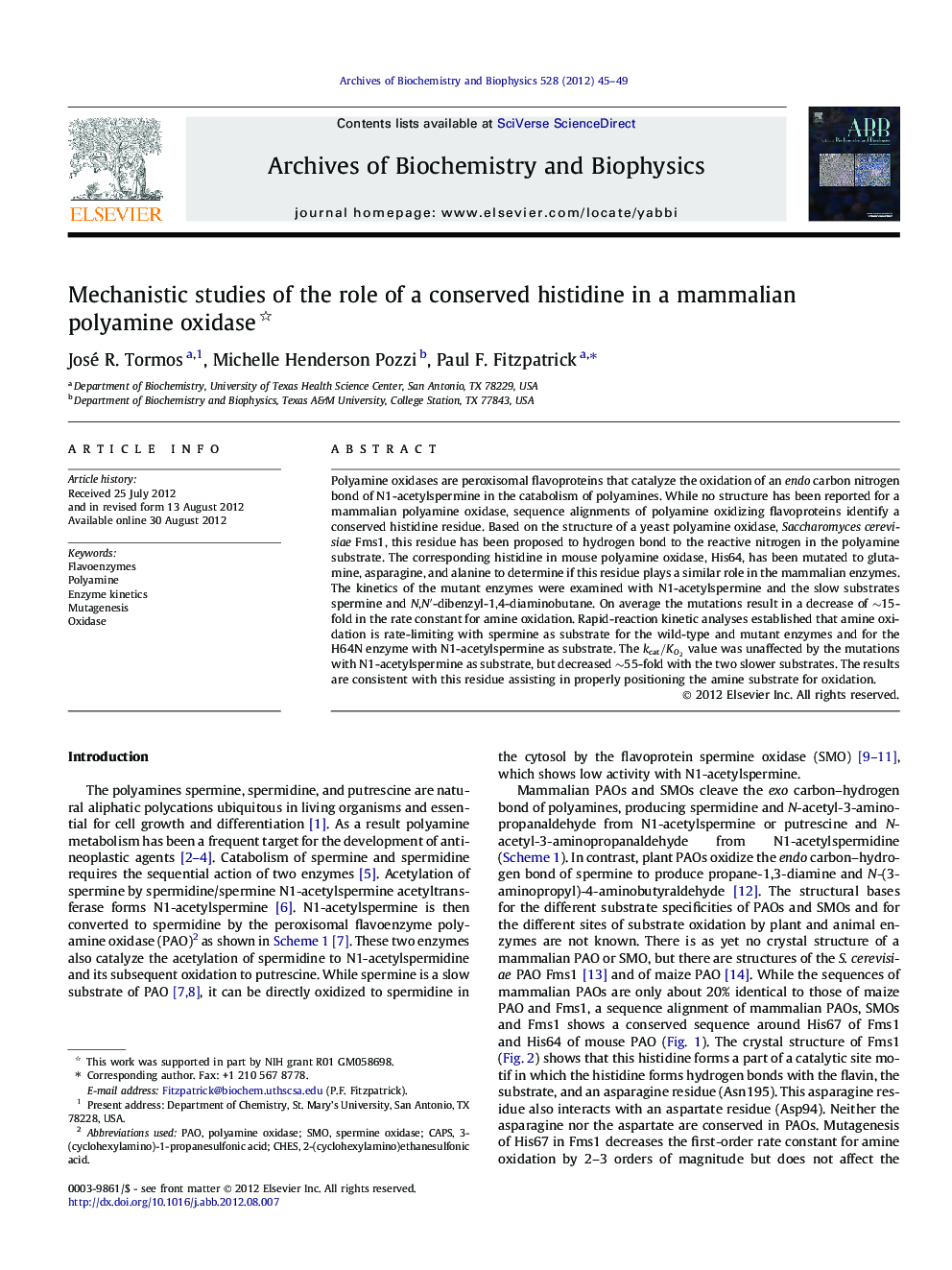| Article ID | Journal | Published Year | Pages | File Type |
|---|---|---|---|---|
| 1925489 | Archives of Biochemistry and Biophysics | 2012 | 5 Pages |
Polyamine oxidases are peroxisomal flavoproteins that catalyze the oxidation of an endo carbon nitrogen bond of N1-acetylspermine in the catabolism of polyamines. While no structure has been reported for a mammalian polyamine oxidase, sequence alignments of polyamine oxidizing flavoproteins identify a conserved histidine residue. Based on the structure of a yeast polyamine oxidase, Saccharomyces cerevisiae Fms1, this residue has been proposed to hydrogen bond to the reactive nitrogen in the polyamine substrate. The corresponding histidine in mouse polyamine oxidase, His64, has been mutated to glutamine, asparagine, and alanine to determine if this residue plays a similar role in the mammalian enzymes. The kinetics of the mutant enzymes were examined with N1-acetylspermine and the slow substrates spermine and N,N ′-dibenzyl-1,4-diaminobutane. On average the mutations result in a decrease of ∼15-fold in the rate constant for amine oxidation. Rapid-reaction kinetic analyses established that amine oxidation is rate-limiting with spermine as substrate for the wild-type and mutant enzymes and for the H64N enzyme with N1-acetylspermine as substrate. The kcat/KO2kcat/KO2 value was unaffected by the mutations with N1-acetylspermine as substrate, but decreased ∼55-fold with the two slower substrates. The results are consistent with this residue assisting in properly positioning the amine substrate for oxidation.
Graphical abstractFigure optionsDownload full-size imageDownload high-quality image (77 K)Download as PowerPoint slideHighlights► His64 of mouse polyamine oxidase is conserved in polyamine-oxidizing enzymes. ► His64 of mouse polyamine oxidase was mutated to asparagine, glutamine, and alanine. ► The mutations decrease the rate constant for amine oxidation with fast and slow substrates. ► The mutations only affect the rate constant for flavin oxidation with the slow substrates. ► The results are consistent with His64 forming a hydrogen bond with the polyamine.
